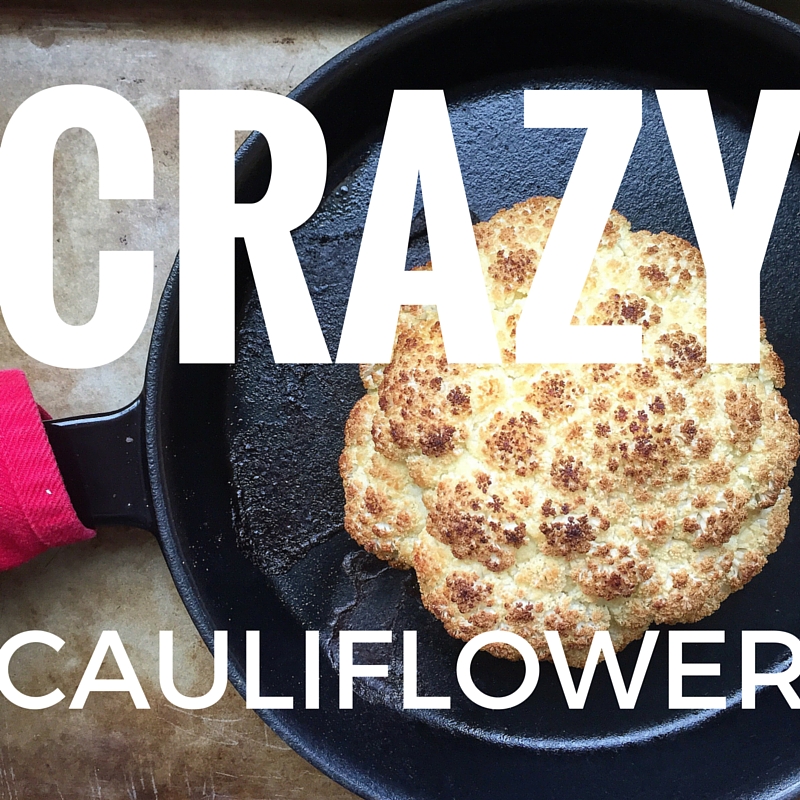
This is a fun one, guys. I’m super excited about this week. There’s so much you can make with cauliflower, I had a hard time deciding on just 4 recipes to focus on. But before we get into the recipes, I wanted to share 7 interesting facts about CAULIFLOWER.
1) Cauliflower is a Cruciferous Vegetable
It’s in the same family as broccoli, cabbage, Brussels sprouts (one of my faves!), broccoli rabe, bok choy, and our superfood friend kale.
2) Cauliflower is a Good Source of Fiber
It has over 9 grams of fiber in every 100 calories! And there are only 146 calories in a medium-sized head of cauliflower (about 580 grams), according to a quick Google search.
3) Cauliflower suppors 3 important body systems
It supports our detox system, antioxidant system and anti-inflammatory system. These 3 body systems are connected with cancer prevention. It’s also an excellent source of Vitamins C, provides a range of antioxident nutrients and is an excellent source of Vitamin K, which is known for its anti-inflammatory properties.
Does that mean we should eat cauliflower at every meal, every day? Not exactly. It’s all about balance, right? Eat the rainbow, as they say. If you’d like to read more, check out the sources at the bottom of my post or go to whfoods.com (an amazing source of information on some of the world’s healthiest foods).
4) Cauliflower Contain Purines
On the flipside of all those positive health benefits, it’s important to note that cauliflower contains naturally occurring substances called purines. Purines can be broken down to form uric acid. Individuals prone to gout or kidney stones, or other health problems related to excess uric acid in the body, may want to limit or avoid eating foods that contain purines. Of course, talk to your doctor to find out what’s best for you.
5) You Can Eat the Leaves and Stem
The leaves on cauliflower are edible, but they do have a stronger flavor, somewhat similar to collard greens. Instead of throwing them away, you can save them to make stock. Same goes for the stems. Throw them into stocks or cut off the tough outer stem and snack on them (my dog happens to love broccoli and cauliflower stems, who knew?). You can also dice them up and add them to a stir fry.
6) Basic Cauliflower Buying and Storing Tips
Buying Cauliflower:
- Should be dense and heavy
- Leaves should look fresh and green
- Florets should be tight and compact
- No dark spots or mildew (if there are a few brown spots on the outer edges of the florets, simply cut them off before cooking)
- Stem should be satiny white with no dark patches
Storing Cauliflower:
- Wrap in plastic
- Store in fridge
- Don’t wash until ready to use
- Store stem-side down so condensation doesn’t collect on the florets
- Lasts about 5 days in the fridge
- Lasts 1-3 days in the fridge after it’s cooked
7) Cut the Smell
Not a fan of the way cauliflower smells when you boil it? Try adding celery seeds or celery leaves to the water. It’s a simple way to cut down the smell.
If you’d like to watch the recap of my live Periscope where I talk about these tips and more, click here: https://ktch.tv/7g-W
For additional information and resources, check out the links below:
- Williams Sonoma Cooking from The Farmer’s Market Cookbook
- http://www.softschools.com/facts/plants/cauliflower_facts/673/
- https://en.wikipedia.org/wiki/Cruciferous_vegetables
- http://townesharvest.montana.edu/documents/Cauliflower.pdf
- http://www.whfoods.com/genpage.php?tname=foodspice&dbid=13
- http://www.onegreenplanet.org/vegan-food/do-you-really-know-how-to-cook-cauliflower/
- http://www.foodnetwork.com/videos/all-about-cauliflower-0214988.html
- https://behealthy.today/cauliflower-health-benefits-infographic/ (an amazing cauliflower infographic with recipes!!)
Thanks again for tuning in!!

